Ever found yourself staring at your work boots, wondering if they’ll cut it on the trails? You’re not alone.
The hiking boots vs work boots dilemma is real, and it’s got many outdoor enthusiasts scratching their heads. You might be thinking, “Can’t I just use what I’ve got? Do I really need to shell out for another pair?”
Trust me, we’ve all been there. It’s frustrating, confusing, and let’s face it, expensive. But don’t sweat it.
We’re about to dive into a 3-step guide that’ll clear up the fog and help you make the right choice for your feet and your wallet. No more second-guessing or blister-inducing mistakes.
Ready to put your best foot forward? Let’s lace up and get started.
Step 1. Pinpoint Your Footwear Needs: What’s Your Boot Mission?
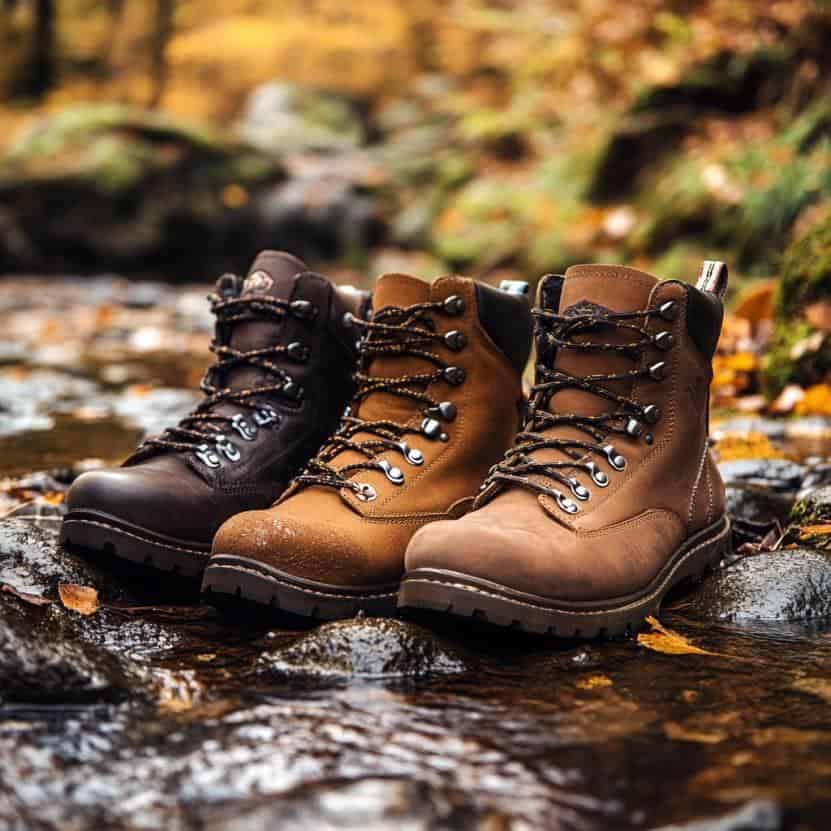
When it comes to the boots vs work boots debate, it’s crucial to start by taking a good, hard look at your needs. Think of it as choosing the right tool for the job – you wouldn’t use a sledgehammer to hang a picture, right?
Identify your primary activities
First up, let’s talk about what you’ll be doing in these boots. Are you gearing up for casual day hikes or planning to conquer challenging trails? Maybe you’re looking for footwear that can handle both your weekend adventures and your 9-to-5 grind.
For hiking, consider the types of hiking you’ll be doing. Will you be tackling rocky terrain that demands robust ankle support, or are you more of a trail runners kind of person? The intensity of your hikes will play a big role in your boot choice.
On the work front, think about your working environments. Are you in construction, dealing with heavy equipment where a steel toe cap is a must? Or perhaps you’re in landscaping, where waterproofing is key? Your work boots need to protect your feet from the specific hazards of your job.
Consider frequency of use
Now, let’s talk about how often you’ll be lacing up. Are you a weekend warrior, hitting the trails every chance you get? Or is hiking more of a once-in-a-blue-moon activity for you?
For work, are we talking about daily wear, where comfort and durability are paramount? Or do you need boots for occasional site visits?
The frequency of use will impact not only the type of boot you choose but also how much you might want to invest. After all, if you’re wearing these boots day in and day out, they’d better be up to the task!
Evaluate your budget
Let’s face it – good boots aren’t cheap, but they’re an investment in your comfort and safety. When comparing hiking boots and work boots, you’ll find a wide range of prices. High-end hiking boots can easily cost as much as, if not more than, a quality pair of work boots.
Consider this: a cheap pair that falls apart quickly isn’t a bargain if you have to replace them every few months. On the flip side, you don’t want to break the bank on top-of-the-line boots if they’ll spend most of their time in your closet.
Step 2. Battle of the Boots: Key Features Face-Off
Now that we’ve sized up your needs, let’s dive into the nitty-gritty of what sets hiking boots apart from work boots. It’s like comparing apples and oranges – they’re both fruit, but they’ve got their own unique qualities.
Flexibility
Hiking boots are the gymnasts of the boot world. They’re designed to flex with your foot as you navigate varied terrain. This flexibility helps prevent blisters and fatigue on long hikes.
Work boots, on the other hand, are often stiffer. Think of them as the shoes that protect you – they’re there to keep you steady and safe in dangerous places. This stiffness can be a lifesaver when you’re carrying heavy loads or working on uneven surfaces.
Traction
When it comes to grip, hiking boots are like mountain goats – they’re built to handle Mother Nature’s obstacle course. Their outsoles are designed with deep, aggressive treads that bite into dirt, rocks, and even snow.
Work boots focus on different kinds of traction. They’re engineered to keep you steady on man-made surfaces like concrete, metal, or even oily floors. Some work boots even come with special slip-resistant soles for extra safety in slick conditions.
Weight
Here’s where things get interesting. Hiking boots are typically lighter than their work counterparts. Why? Because when you’re covering miles of trail, every ounce counts. Lightweight boots help reduce fatigue and make your hike more enjoyable.
Work boots often come with extra weight, but for good reason. That extra heft often means extra protection. Steel toe caps, thicker soles, and robust construction all add up. But remember, if you wear work boots for hiking, that extra weight can quickly make your walk enjoyable become hard.
Durability and construction
Both hiking and work boots are built to last, but they face different challenges. Hiking boots need to withstand the elements – think rocky trails, stream crossings, and whatever Mother Nature throws your way. They often feature leather uppers combined with synthetic materials for a balance of durability and breathability.
Work boots are the tanks of the boot world. They’re built to handle harsh working environments, from construction sites to factories. Many feature full-grain leather uppers that can take a beating and keep on ticking. Some even come with features like puncture-resistant soles to protect your feet from sharp objects.
Waterproofing
Nothing ruins a hike faster than wet feet. That’s why many hiking boots come with waterproof membranes like Gore-Tex. These keep water out while allowing your feet to breathe – a crucial feature for all-day comfort on the trail.
Work boots may or may not be waterproof, depending on their intended use. Some jobs require waterproof boots, while others prioritise breathability. If you’re considering using work boots for hiking, check their water resistance. A boot that’s great on a dry construction site might leave you with soggy socks on a dewy morning hike.
Toe protection
Here’s where work boots often shine. Many come with a steel toe cap or composite toe for maximum protection. This is crucial in environments where heavy objects could fall on your feet.
Hiking boots, while often reinforced, typically don’t have safety-rated toe protection. They’re designed more for comfort and flexibility on the trail. But don’t worry – they still offer enough protection for most hiking situations.
Step 3. Decision Time: Choosing Your Perfect Sole Mate
Alright, we’ve laid out the facts. Now it’s decision time. Let’s break it down to help you make the right choice.
Choose hiking boots if:
- Your primary use is hitting the trails. If you’re more likely to be scaling a mountain than climbing a ladder, hiking boots are your go-to.
- You need lightweight, flexible footwear for covering long distances. Remember, on a 10-mile hike, every ounce matters.
- Varied terrain traction is your top priority. If your adventures take you from muddy paths to rocky scrambles, hiking boots have the grip you need.
Choose work boots if:
- Safety regulations at your job require specific boot features. If you need that steel toe cap or electrical hazard protection, work boots are the way to go.
- You need robust protection against job-site hazards. Work boots are designed to keep your feet safe in tough environments.
- Durability in harsh work environments is crucial. If your boots need to withstand chemicals, extreme temperatures, or constant wear and tear, work boots are built for the challenge.
Consider hybrid options:
Can’t decide? Don’t worry – you’re not alone. That’s why some clever folks have created boots designed for both work and light hiking. These hybrids aim to offer the best of both worlds.
Take the Red Wing’s TruHiker, for example. It’s got the durability and protection of a work boot, with some of the comfort features of a hiking boot. It’s like the Swiss Army knife of footwear – versatile enough to handle a variety of situations.
But remember, hybrids are just that – a compromise. They might not excel in extreme conditions like specialised boots would. It’s all about finding the right balance for your needs.
Happy Feet, Happy You: Boost Your Foot Health
Let’s talk about something that often gets overlooked –your feet! They’re the unsung heroes carrying you through your day, so it’s time we gave them some love.
Long-term effects of wearing the right (and wrong) boots
Choosing the right boots isn’t just about comfort today – it’s an investment in your future foot health. Wearing ill-fitting or inappropriate boots can lead to a host of issues down the road. We’re talking plantar fasciitis, bunions, or even chronic back pain. Ouch!
On the flip side, the right boots can be like a spa day for your feet. They provide the support and protection your feet need, helping to prevent injuries and reduce fatigue. It’s like choosing between a rocky path and a smooth trail – your feet will thank you for making the right choice.
Importance of proper arch support in both boot types
Here’s a fun fact: your foot has three arches, not just one! And they all need proper support to keep you comfortable and prevent injuries. Both hiking and work boots should support the foot in all the right places.
For hiking boots, good arch support helps distribute your weight evenly as you traverse uneven terrain. It’s like having a personal shock absorber for your feet.
In work boots, proper arch support can mean the difference between calling it a day early and powering through your shift. It helps reduce fatigue and can even improve your overall posture.
How to address common foot issues
Got flat feet? High arches? Plantar fasciitis? Don’t worry, you’re not alone. Many boot manufacturers offer models designed to address specific foot issues.
For example, if you’re prone to ankle rolls, look for boots with higher ankles and good lateral support. It’s like having a personal spotter for your ankles.
If you suffer from plantar fasciitis, seek out boots with excellent heel cushioning and arch support. Think of it as a comfort blanket for your heels.
Custom orthotics and insoles for enhanced comfort
Sometimes, off-the-shelf boots just don’t cut it. That’s where custom orthotics come in. These are like tailor-made suits for your feet – designed to address your specific needs.
Even if you don’t need full custom orthotics, aftermarket insoles can be a game-changer. They can add extra cushioning, support, or even help with odour control. It’s like upgrading your boots without buying a whole new pair!
Find Your Fit: The Secret to Blister-Free Adventures
Finding the perfect fit is like hunting for treasure – it takes some effort, but the payoff is worth it.
How hiking and work boot sizes may differ
Here’s a curveball – a size 10 in hiking boots might not be the same as a size 10 in work boots. Crazy, right? Different manufacturers use different lasts (foot-shaped moulds), which can affect sizing.
Hiking boots often run a bit larger to accommodate thick socks and foot swelling on long hikes. Work boots, on the other hand, tend to fit more true to size.
Importance of proper fit for performance and comfort
A poorly fitting boot is like a bad dance partner – it’ll leave you with sore feet and a desire to sit down. Too tight, and you risk blisters and numbness. Too loose, and you’ll be sliding around, risking twisted ankles or worse.
The right fit, though? It’s like Cinderella’s glass slipper – perfect from heel to toe.
Tips for measuring your feet accurately
Here’s a pro tip: measure your feet at the end of the day, when they’re at their largest. Feet tend to swell throughout the day, especially if you’re on them a lot.
Use a Brannock device if you can – it’s that metal contraption you see in shoe stores. It gives you length, width, and arch measurements all in one go.
Accommodating for swelling and thick socks
When trying on boots, wear the socks you’ll use with them. For hiking boots, that often means thick, cushioned socks. For work boots, it depends on your job and personal preference.
Remember to leave a little wiggle room for your toes. A good rule of thumb is to have about a thumb’s width between your longest toe and the end of the boot.
Gear Up: Supercharge Your Boot Performance
Let’s talk about the supporting cast that can turn a good boot experience into a great one. It’s like assembling your own superhero team for your feet!
Socks: Importance and recommendations for each boot type
Socks are the unsung heroes of the boot world. They’re like the secret sauce that can make or break your comfort.
For hiking boots, moisture-wicking socks are your best friend. They keep your feet dry, preventing blisters and fungal infections. Look for socks with extra cushioning in high-impact areas like the heel and ball of your foot. It’s like giving your feet a comfy little pillow to walk on.
For work boots, durability is key. Look for socks with reinforced heels and toes to prevent wear and tear. If you’re in a hot environment, consider moisture-wicking options here too. Nobody likes sweaty feet at work!
Insoles and orthotics for customised comfort
Think of insoles as personal trainers for your feet. They provide extra support where you need it most.
For hiking, consider insoles with extra arch support and heel cushioning. They can help reduce fatigue on long trails and prevent issues like plantar fasciitis.
In work boots, shock-absorbing insoles can be a game-changer, especially if you’re on hard surfaces all day. It’s like giving your feet a mini trampoline to bounce on!
Gaiters and their use with different boot types
Gaiters are like bouncers for your boots – they keep the riffraff (read: dirt, pebbles, and water) out.
For hikers, gaiters are fantastic for keeping your boots and socks dry when trudging through wet grass or shallow streams. They’re also great for keeping trail debris out of your boots.
While less common with work boots, gaiters can be useful in certain jobs. For example, if you work in landscaping, gaiters can keep grass clippings and soil out of your boots.
Boot care kits and maintenance tools
Taking care of your boots is like maintaining a car – a little regular TLC goes a long way.
For leather boots (both hiking and work), invest in a good leather conditioner. It’s like a moisturiser for your boots, keeping the leather supple and preventing cracks.
Don’t forget a good brush for cleaning off dirt and debris. For hiking boots, consider waterproofing spray to keep your feet dry on the trails.
For work boots, depending on your job, you might need specialised cleaners to handle oil, grease, or other substances.
Crunch the Numbers: Maximise Your Boot Budget
Let’s talk about money. After all, boots are an investment, and you want to get the most bang for your buck.
Initial investment comparison
Work boots often seem cheaper than hiking boots. But hold your horses – it’s not always that simple.
High-end work boots with features like steel toes and electrical hazard protection can easily cost as much as quality hiking boots. It’s like comparing apples and oranges – they’re built for different purposes.
Durability and replacement frequency
Here’s where things get interesting. A good pair of work boots might need replacing every 6–12 months if you’re wearing them daily in tough conditions. It’s like being a professional athlete – they take a beating!
Quality hiking boots, on the other hand, can last for years with proper care, even with regular use. They’re the marathon runners of the boot world – built for the long haul.
Versatility factor: One boot for multiple uses?
If you’re considering using one boot for both work and hiking, think carefully. While it might seem like a money-saver upfront, it could cost you in the long run.
Using work boots for hiking can lead to discomfort, blisters, and even injuries due to their weight and lack of flexibility. It’s like trying to run a marathon in dress shoes – not ideal!
On the other hand, using hiking boots for work might not have the safety features you need and could break quickly in hard work places. It’s akin to using a sports car as a moving truck – it just wasn’t built for that purpose.
Hidden costs (accessories, maintenance, etc.)
Don’t forget to factor in the extras! Specialised socks, insoles, and maintenance products all add to the total cost of ownership.
For hiking boots, you might need to invest in gaiters, special hiking socks, and waterproofing products. Work boots might require specific cleaning products or replacement insoles more often.
Double Duty Dilemma: When One Boot Must Do It All
Sometimes, you need your boots to be jacks of all trades. Let’s explore how to make that work.
Modifications to make work boots more hiking-friendly
If you’re dead set on using your work boots for hiking, there are a few tricks to make them more trail-worthy.
First, consider replacing the insoles with ones designed for hiking. This can improve comfort and support on long treks. It’s like giving your work boots a crash course in trail running.
You might also want to invest in hiking-specific socks to improve moisture management and reduce the risk of blisters. Think of it as giving your feet a first-class upgrade in your economy boots.
How to improve hiking boots for occasional work use
On the flip side, if you need your hiking boots to pull double duty at work, there are ways to beef them up
Look into aftermarket toe guards that can provide some protection. Though keep in mind these won’t meet safety standards for true work boots. It’s like adding training wheels to a racing bike – better than nothing, but not ideal.
You might also think about treating the leather with a stronger waterproofing solution to handle tougher conditions.
Limitations and safety considerations
Here’s the kicker – there are some things you just can’t change. Work boots modified for hiking will still be heavier and less flexible than true hiking boots. And hiking boots, no matter how you dress them up, won’t provide the same level of protection as proper work boots.
When it comes to safety features like steel toes or electrical hazard protection, there’s no DIY solution. It’s like trying to turn a sedan into a tank – some features just have to be built-in from the start.
When adaptations aren’t enough: Knowing when to buy purpose-specific boots
Sometimes, you’ve got to face the facts – one boot can’t do it all. If you’re always uncomfortable, or if your job needs special safety features, it’s time to buy boots made for your job.
Think of it this way – you wouldn’t use a kitchen knife to mow your lawn, right? Sometimes, you need the right tool for the job. Your feet (and your safety) are worth the investment in proper footwear.
Remember, at the end of the day, the goal is to keep your feet comfortable, protected, and ready for whatever challenges you throw at them. Whether that means separate pairs for work and play, or finding that perfect hybrid, the right choice is the one that keeps you on your feet and moving forward.
Taking Your Next Steps
So, you’ve made it through the boot maze –whew! Still feeling a bit overwhelmed? Maybe you’re thinking, “Great, now I know the difference, but I’m still not sure which to choose.”
Don’t sweat it – that’s totally normal. Remember, you’ve now got a solid 3-step guide in your toolkit. You know how to assess your needs, compare key features, and make an informed decision.
Imagine lacing up your perfect pair, whether you’re conquering mountain trails or ruling the job site. Your feet will be singing your praises! No more blisters, no more aching arches – just pure, foot-hugging comfort.
You’re not just choosing boots; you’re investing in your comfort, safety, and success. So go ahead, take that step. Your feet are ready for their next big adventure!
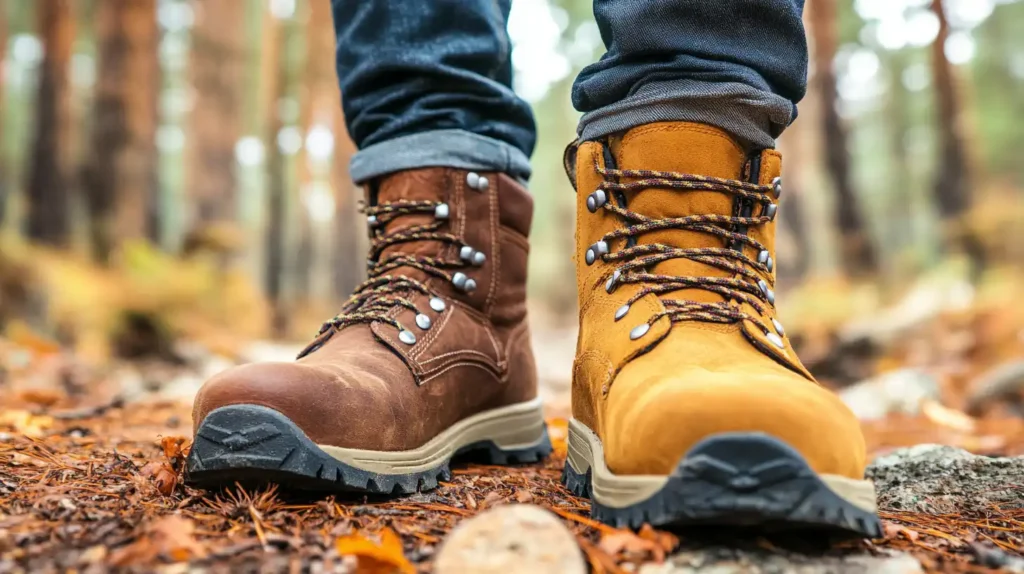
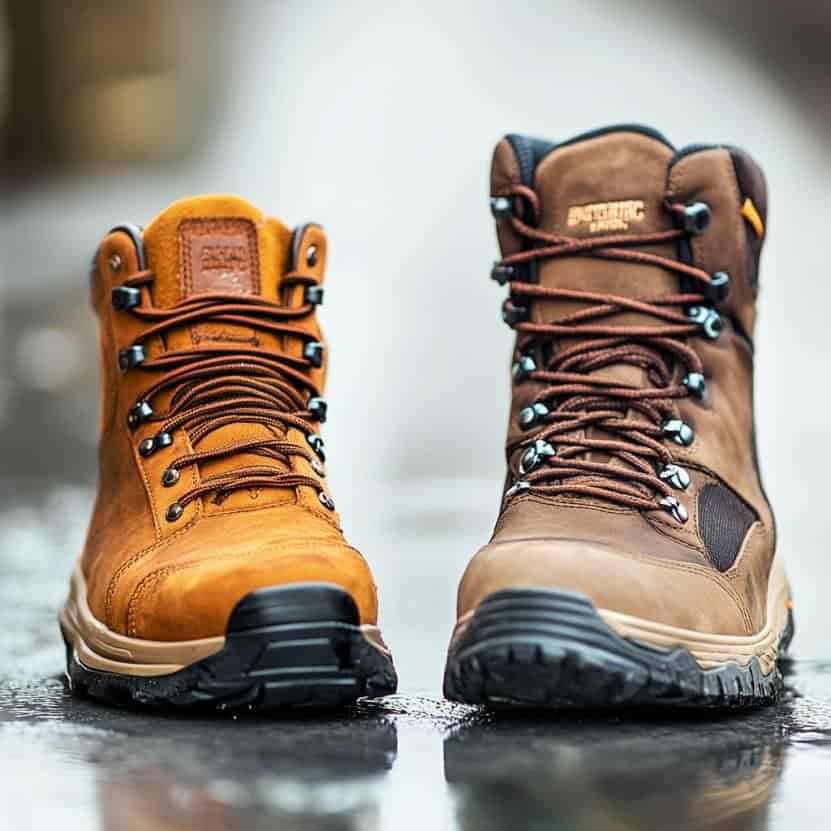
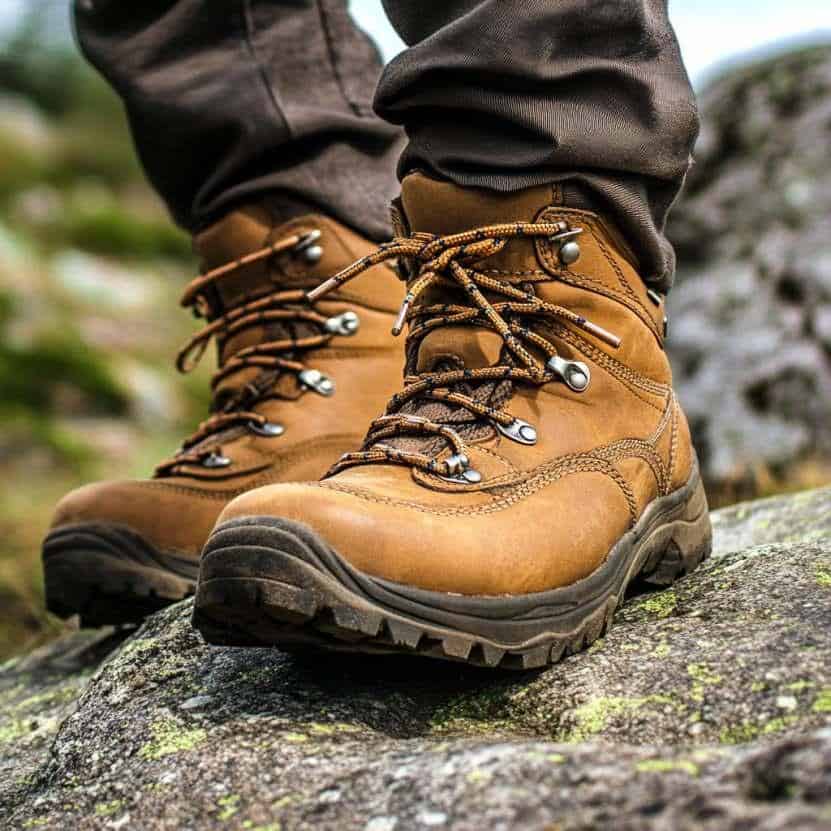
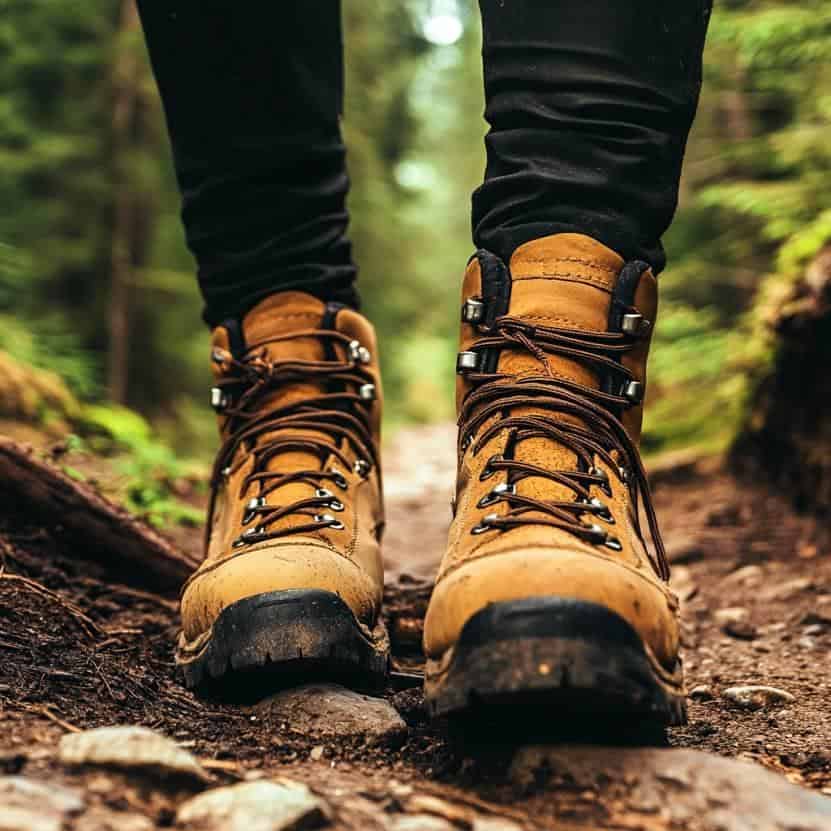
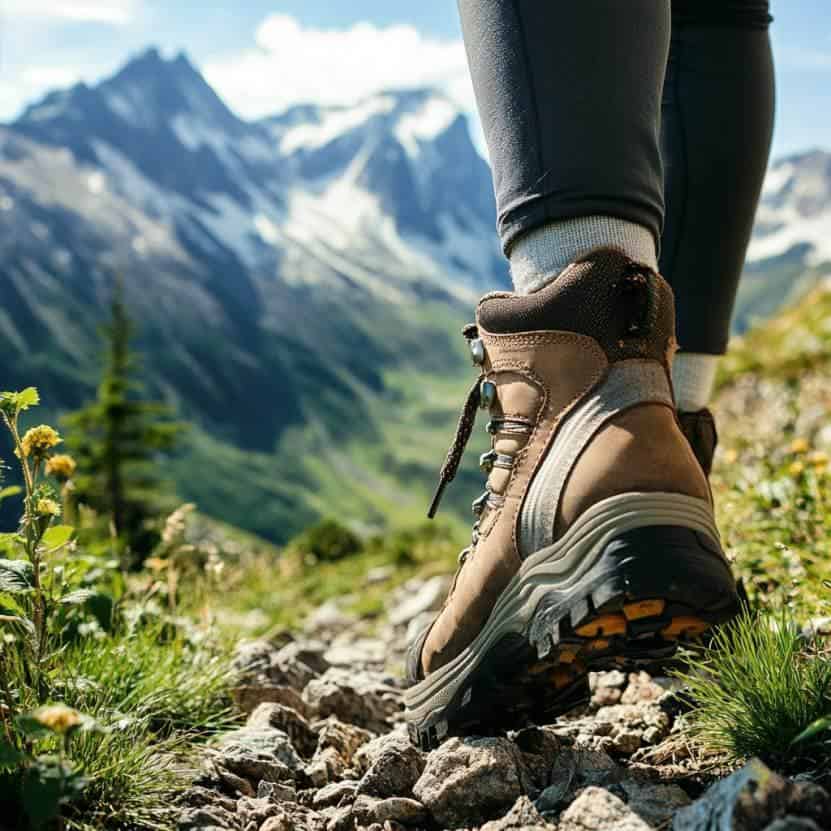


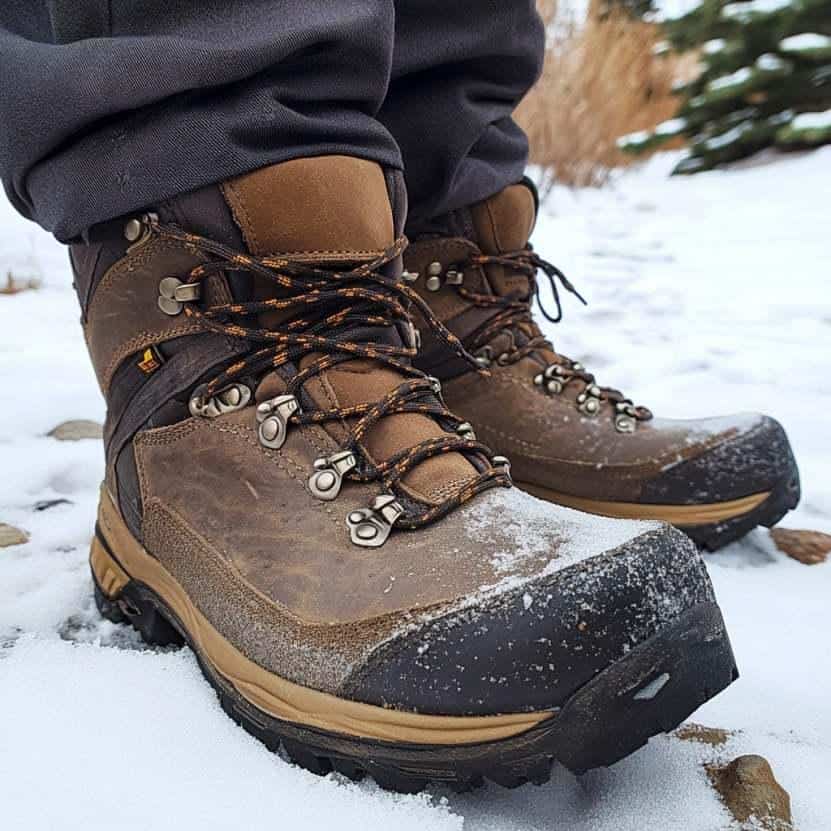

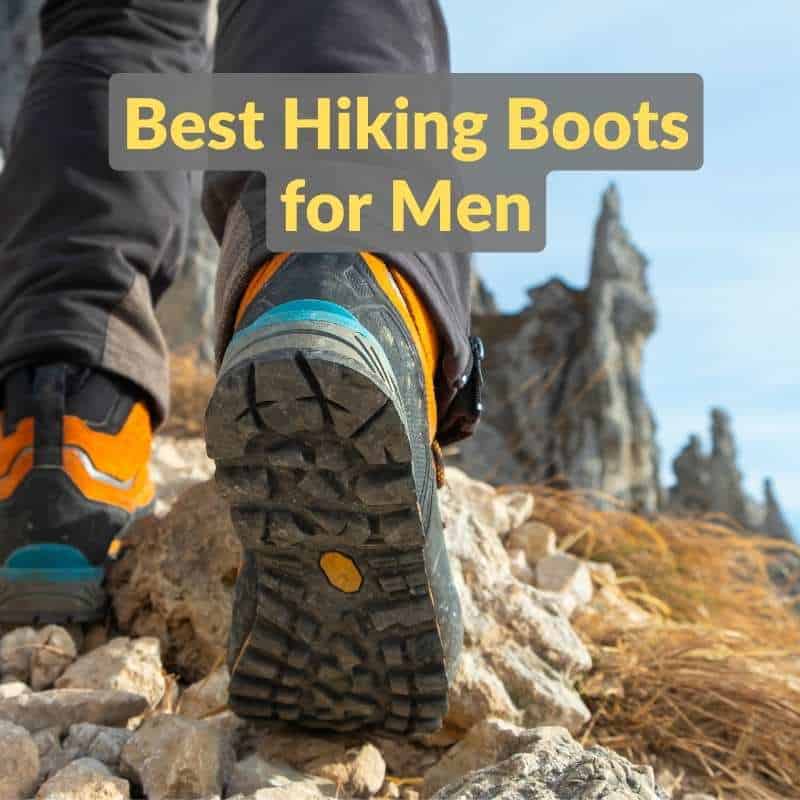

Pingback: Foolproof Day Hiking Checklist: Pack Smart, Hike Happy
Pingback: 15 Essential Winter Camping Tips | WBHawkins.com
Pingback: Navigation Techniques: How to Use a Map and Compass | WBH
Pingback: What Is the Best Waterproof Jacket for Hiking (in 2023)? - Will Hawkins - Outdoor Adventure